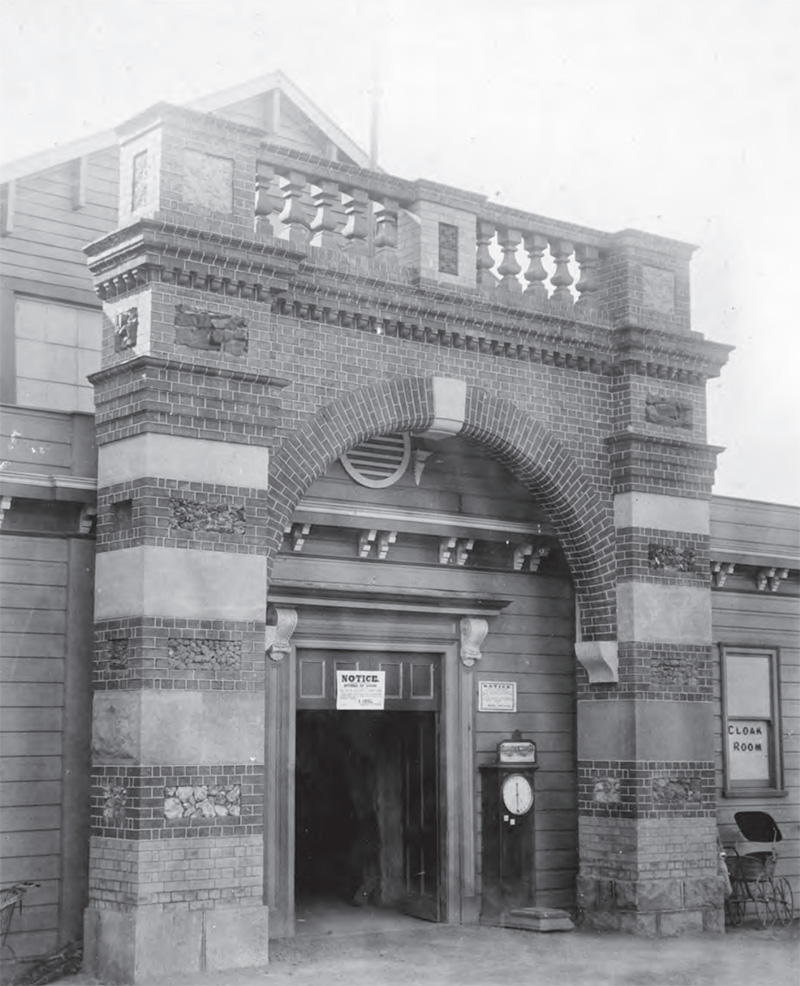Lost Mines of the Tamar
The Mineral Arch at Albert Hall
Albert Hall and its Mineral Arch entrance were built for the 1891 Tasmanian International Exhibition in
Launceston. There was already a Mineral Court planned for the Exhibition, and many companies in this
book sent samples to it, but a further demonstration of Tasmania’s mineral wealth was desired. The Arch was
the solution, and local bricks with blocks of limestone, bluestone and other local minerals were incorporated.
Sadly, the Mineral Arch was dismantled after the show. Image courtesy of the Launceston Library.

Read More Palaeo Tasmania
Four hundred metres long and a metre high: What were these middens?
The considerable size of some Aboriginal middens raises questions. These are constructed consciously and deliberately – they are not the result of people idly tossing discarded shells over their shoulder.
PALAEO ARCHAEOLOGY OF THE TAMAR VALLEY
Human history in the Tamar Valley could extend back some 40,000 years considering that at least one site in the upper Forth River 200km west has such a basal date, but the Tamar lacks sites, caves, that could confirm this. The only site to yield a date is at Flowery Gully, near Beaconsfield, being calibrated to c.8,000 BP a bone deposit with a bone tool.
Ochre
Ochres are earthy, pulverulent (reduced or crumbled to powder or dust) forms of Haematite and Limonite or friable (easily crumbled), earthy iron ore.
It is widely distributed in Tasmania, both as small pellets in gravels (Tamar Valley) or in reefs (Alum Cliffs). It takes the form of a natural pigment, browns, reds and yellow. Red in its most vivid state is most prized, yellow it seems is rarer.
Tamar Middens
In early 1801 Philip King, now Governor, decided to establish a government coal mining operation at Newcastle. Although the expedition was nominally under the command of another officer, it included William Paterson, newly appointed as Lt-Governor.
Ochre Exploitation Around the Tamar
Until very recently it was thought that Tulampanga, near Mole Creek, was the only source of high-grade ochre available to Indigenous peoples.
Tamar Valley’s Palaeo Aboriginal History
This work, which comprises the three separate study papers, was put together being all connected to the Tamar Valley’s Palaeo-Aboriginal history.
Tasmania’s Aboriginal Palaeo Art
This work is a collection of papers each pertinent to the art produced over thousands of years by the Palaeo-Tasmanian Aboriginal people.
Their art had roots extending back to their original homeland “Africa”, to what extent can only be wondered, but with obvious relationships that all foraging people have in common.
